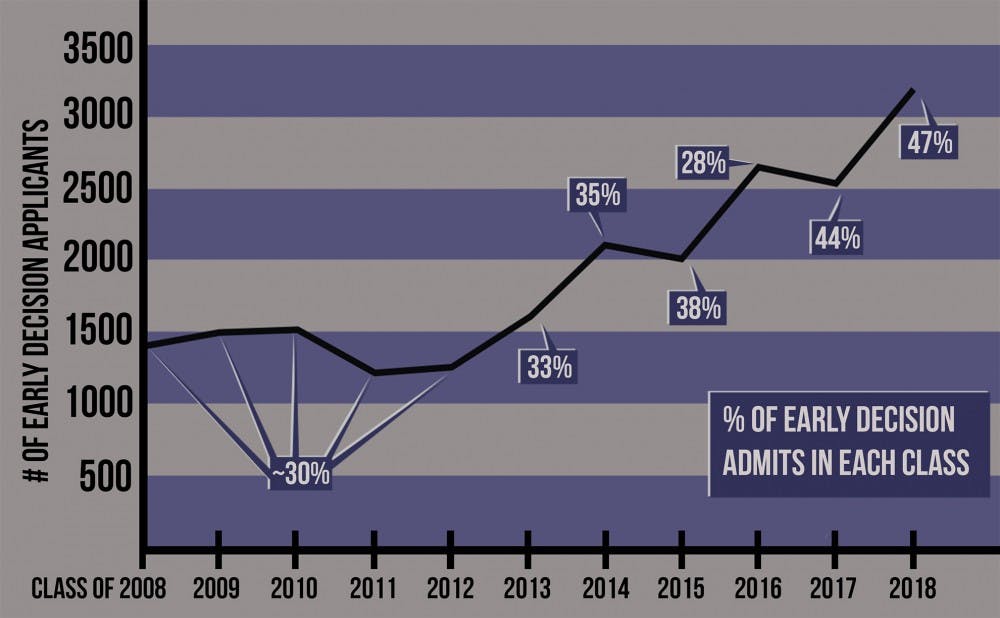As the number of students admitted to Duke via binding early decision has risen over the past few years, the number of students applying for those spots has skyrocketed.
Duke’s number of early applicants has more than doubled in the past decade, going from 1,435 in 2002 to 3,180 in 2013, and the number of acceptances has jumped from 472 to 797. Because the overall class size has stayed at about 1,705, early admits now make up a greater proportion of each incoming class—now approaching 50 percent—leaving fewer spots for regular decision applicants.
In the late 1990s and early 2000s, the Office of Undergraduate Admissions said it aimed to limit the proportion of the class accepted early to around 30 percent. As the early applicant pool has changed over the past decade, however, Duke Admissions has adapted its early admissions philosophy.
“In limiting the size of the entering groups, we are in the minority among selective colleges,” Director of Undergraduate Admissions Christoph Guttentag told The Chronicle in 2002.
The percentage of the class accepted early started to gradually increase in the mid-2000s and has shot up in the past five years, reaching 47 percent for the Class of 2018.
Guttentag attributes the change to the increasing strength of the early applicant pool, relative to the regular applicants, as the number of early applications has grown.
“The number of students that we admitted in the past was driven by the size and quality of the pool,” Guttentag said in a recent interview. “As the applicant pool increased and got stronger, it provided us with an opportunity we didn’t have 10 years ago.”
He noted that the difference between the caliber of the early decision applicants and the regular decision applicants was more pronounced 10 years ago—now, the two admissions processes draw applicants who are more comparable in terms of quality, he said.
Bev Taylor, founder and CEO of New York-based college consulting firm The Ivy Coach, said prospective applicants are realizing that admissions are becoming more competitive and that the acceptance rate is higher for early decision than for regular decision. As a result, more are choosing to apply early.
“If they’re looking at these high-caliber schools, they’re mostly savvy enough to know that their best shot is using early decision or single-choice early action," Taylor said.
Although Duke’s 25 percent increase in early applications was not matched by any of its peer institutions this year, a number of schools saw significant increases in early application totals. Among these were Northwestern University, with a 14 percent increase; Cornell University, with a 13.6 percent increase; and Stanford University, with a 13.9 percent increase.
“It’s a trend that’s been happening for years, and it’s only gotten more competitive,” Taylor said.
Guttentag also said that though early decision tends to be less diverse than regular decision, the early pool has grown increasingly diverse in both geography and ethnicity. A record 37 percent of this year’s early admits were students of color, which marks an 8 percent increase from last year.
Get The Chronicle straight to your inbox
Signup for our weekly newsletter. Cancel at any time.

